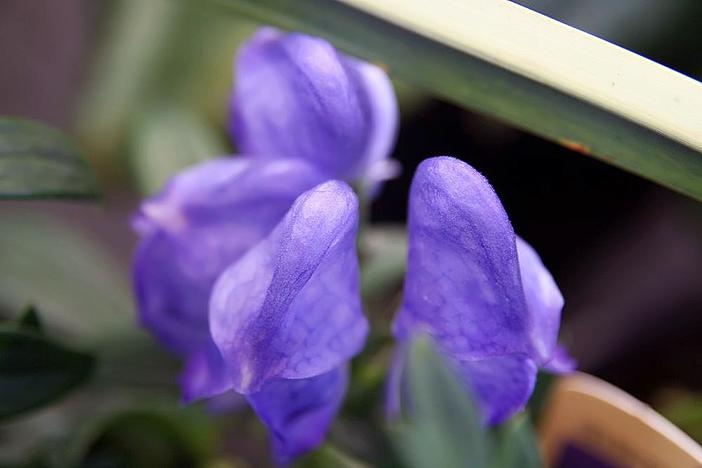Azure Monkshood
(Aconitum fischeri)
Azure Monkshood (Aconitum fischeri)
/
/

David J. Stang
CC BY-SA 4.0
Image By:
David J. Stang
Recorded By:
Copyright:
CC BY-SA 4.0
Copyright Notice:
Photo by: David J. Stang | License Type: CC BY-SA 4.0 | License URL: https://creativecommons.org/licenses/by-sa/4.0 | Uploader: David Stang | Publisher: Wikipedia Commons




















Estimated Native Range
Summary
Aconitum fischeri, commonly known as Azure Monkshood, is a deciduous perennial herb native to moist meadows and woodland edges in Northeast Asia, particularly in regions like the Russia Far East and Korea. It typically grows to a height and width of approximately 2 feet (0.6 meters), featuring deeply divided, dark green leaves that provide a lush backdrop for its striking flowers. The plant produces dense clusters of hooded, azure-blue flowers from late summer to early fall, which are highly showy and add a splash of color to garden settings.
Azure Monkshood is valued for its vibrant blue flowers and is often used in border plantings, woodland gardens, and as part of a perennial bed. It is relatively easy to maintain, requiring consistent moisture and well-drained soil. It thrives in part shade to full sun, though in hotter climates, it benefits from afternoon shade to prevent scorching. While beautiful, all parts of the plant are highly toxic if ingested, and it should be handled with care, especially around children and pets. Gardeners should wear gloves when working with this plant to avoid skin irritation. Despite its toxicity, it has been used historically in traditional medicine with extreme caution. There are no significant disease problems, but it can occasionally suffer from root rot if overwatered or planted in poorly drained soils.CC BY-SA 4.0
Azure Monkshood is valued for its vibrant blue flowers and is often used in border plantings, woodland gardens, and as part of a perennial bed. It is relatively easy to maintain, requiring consistent moisture and well-drained soil. It thrives in part shade to full sun, though in hotter climates, it benefits from afternoon shade to prevent scorching. While beautiful, all parts of the plant are highly toxic if ingested, and it should be handled with care, especially around children and pets. Gardeners should wear gloves when working with this plant to avoid skin irritation. Despite its toxicity, it has been used historically in traditional medicine with extreme caution. There are no significant disease problems, but it can occasionally suffer from root rot if overwatered or planted in poorly drained soils.CC BY-SA 4.0
Plant Description
- Plant Type: Herb
- Height: 2-3 feet
- Width: 1.5-2.5 feet
- Growth Rate: Moderate
- Flower Color: Purple
- Flowering Season: Summer, Fall
- Leaf Retention: Deciduous
Growth Requirements
- Sun: Full Sun, Part Shade
- Water: Medium
- Drainage: Slow, Medium, Fast
Common Uses
Bee Garden, Bird Garden, Butterfly Garden, Deer Resistant, Hummingbird Garden, Rabbit Resistant, Salt Tolerant, Showy Flowers, Water Garden
Natural Habitat
native to moist meadows and woodland edges in Northeast Asia, particularly in regions like the Russia Far East and Korea
Other Names
Common Names: Fischer Monkshood, Wolfsbane, Septemberstormhatt
Scientific Names: , Aconitum napellus, Aconitum fischeri, Aconitum chinense, Aconitum autumnale, Aconitum sinense, Aconitum kamtschaticum, Aconitum lubarskyi, Aconitum abbreviatum, Aconitum fischeri f. pilocarpum
GBIF Accepted Name: Aconitum fischeri Rchb.